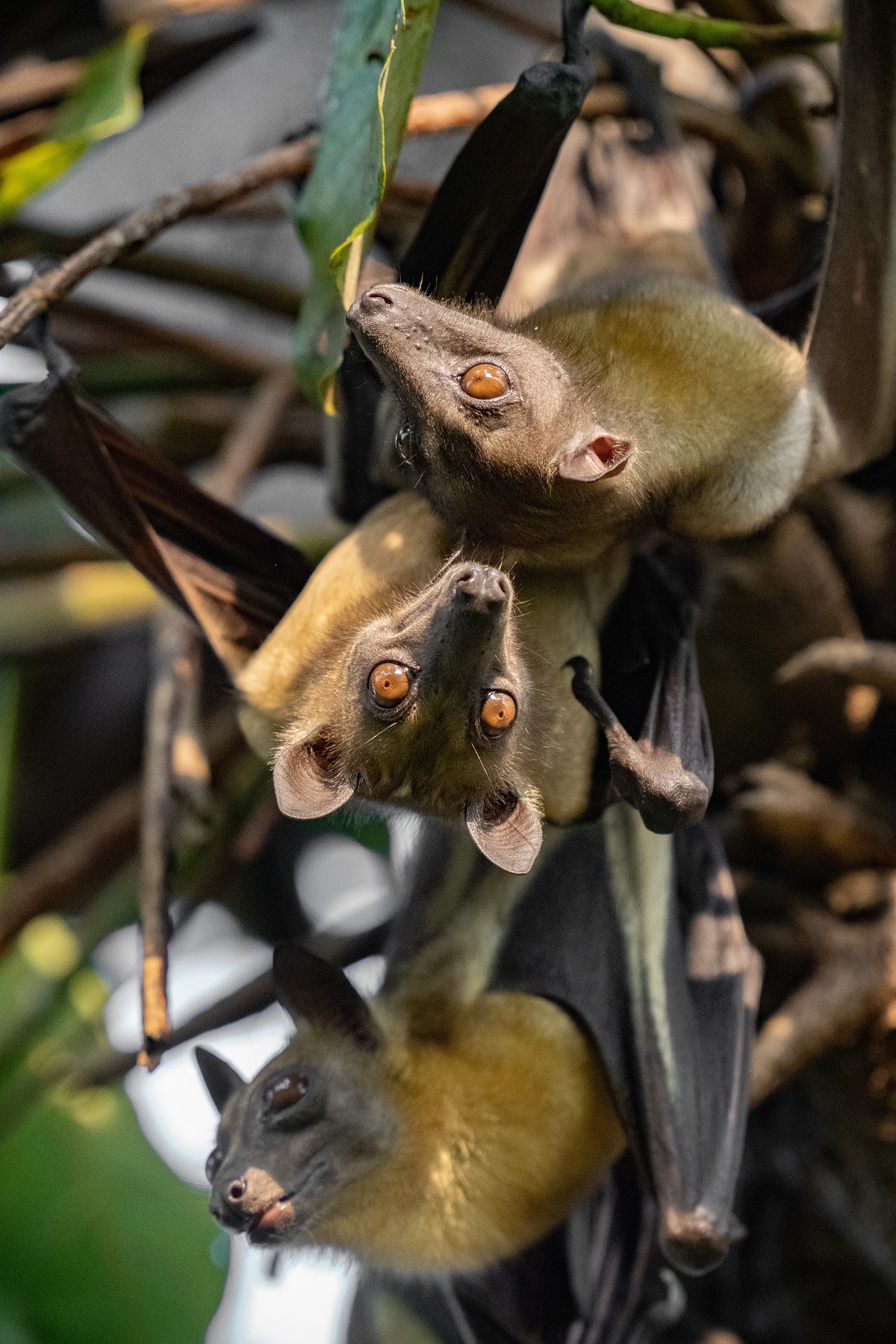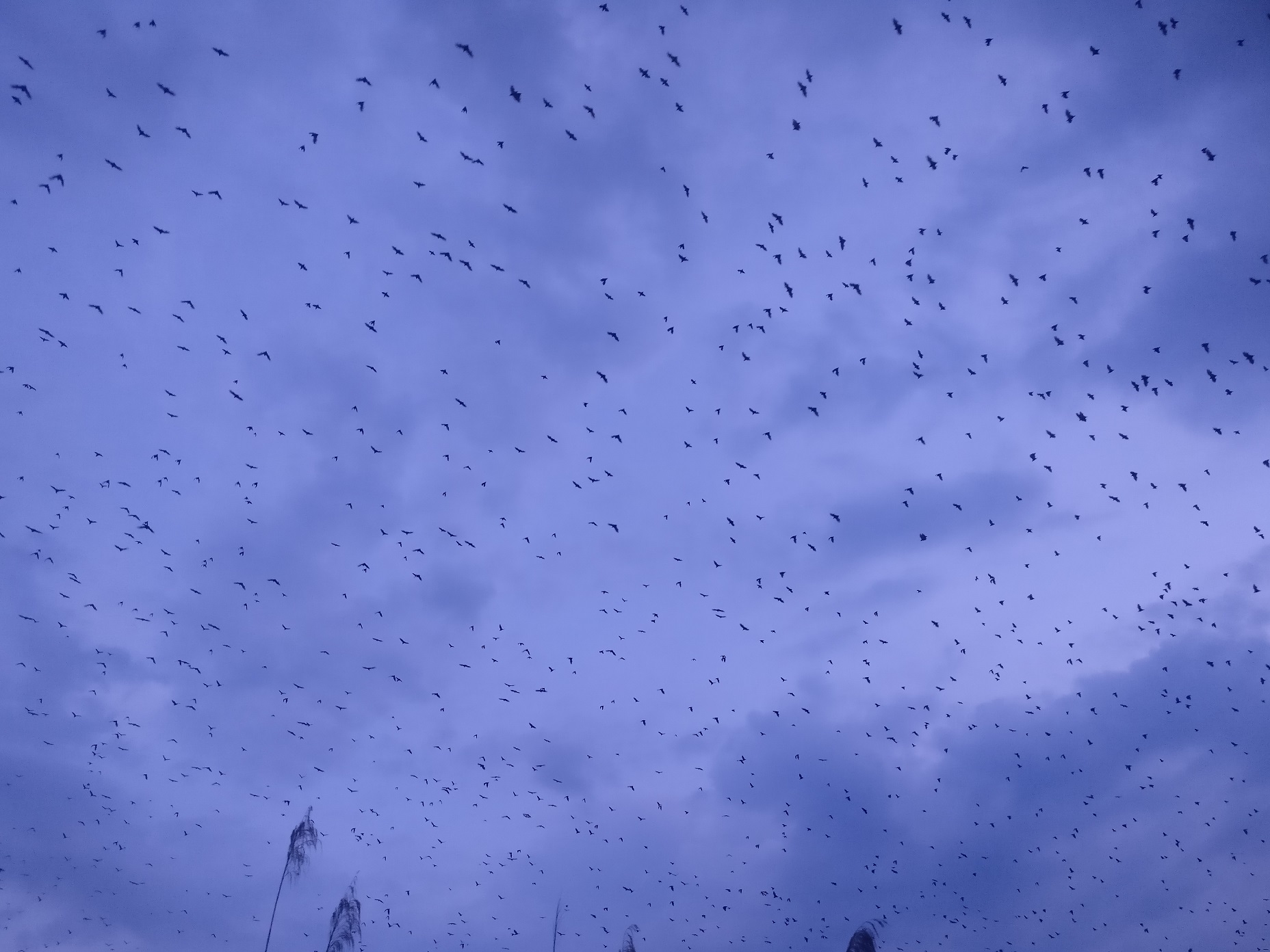
No other fruit bat is known to migrate over as long a distance as the Straw-coloured Fruit Bat, with some flying thousands of kilometres in a single journey. Image: Christopher Walti
Every year, more than two million wildebeest, zebra, gazelles and other herbivores move from Tanzania’s Serengeti plains to the Masai Mara in Kenya, in a momentous event known as the Great Migration. However, that title should really be reserved for something else…
…because as you’ll see in our new video below, the world’s largest mammal migration in fact takes place in the air.
Starting in mid October, at the beginning of the rainy season, an astonishing 10 million Straw-coloured Fruit Bats flock each year to a small patch of evergreen swamp forest in the middle of Zambia’s Kasanka National Park, a protected area managed by World Land Trust (WLT) partner Kasanka Trust Ltd. (KTL).
The sheer scale of this phenomenon is really quite remarkable, to the extent that researchers from the Max Planck Institute of Animal Behaviour, who visited Kasanka last year, have yet to fully explain it. “Even if all known colonies within several thousand kilometres migrate to Kasanka, this does not add up to the numbers we observe here,” they said. Clearly, Kasanka’s special significance to Straw-coloured Fruit Bats is a question science is not yet ready to answer.

The bats of Kasanka can eat up to twice their body weight in fruit each night. Image: Christopher Walti
KTL have found that the bats will fly 50 km from their roost every night to feed in the surrounding forests, covering an area of more than 1.2 million acres (over 500,000 ha)! Incredibly, the entire colony will then return to the same patch of mushitu trees, which measures just a handful of hectares in size.
The bats conform to this schedule and remain in the area until late December, after which they will begin to disperse throughout equatorial Africa. GPS tagging studies have shown that some bats fly thousands of kilometres on this return journey – a distance unheard of with any other fruit bat species.
KTL describes this migration as a “unique phenomenon” and “one of the greatest wildlife spectacles on Earth”. Though the wildebeest may have something to say on the matter, it’s hard to argue against this assessment – take a look at the recent footage and see for yourself!
The bat migration provides our partner KTL with the largest source of tourism revenue, helping fund their conservation work. Footage credit: Christopher Walti, Frank Willems
Bats are “important for global biodiversity and ecosystem health”, says KTL. As well as transforming the night sky for the three months they spend at Kasanka, the migratory Straw-coloured Fruit Bats also play a key ecological role during their visit. By feeding on fruits and flowers, the millions of winged mammals provide important seed dispersal and pollination services – boosting the health of the overall ecosystem.
When present in Kasanka, this Straw-coloured Fruit Bat colony forms perhaps the largest concentration of mammals in the world. And yet the record-breaking numbers can mask a difficult truth: as a whole, the species is on the decline.

The bats coordinate between themselves to fly out in a certain direction every night. Image: Christelle Mallants
In the first 15 years of the 21st century, the global population of these bats fell by 25-30% as a result of deforestation, the use of herbicides and pesticides, and widespread hunting for bushmeat. To help reverse the decline, our partner KTL has spent years working hard to protect the key sanctuary these bats find at Kasanka – a mission that needs your help to succeed.
